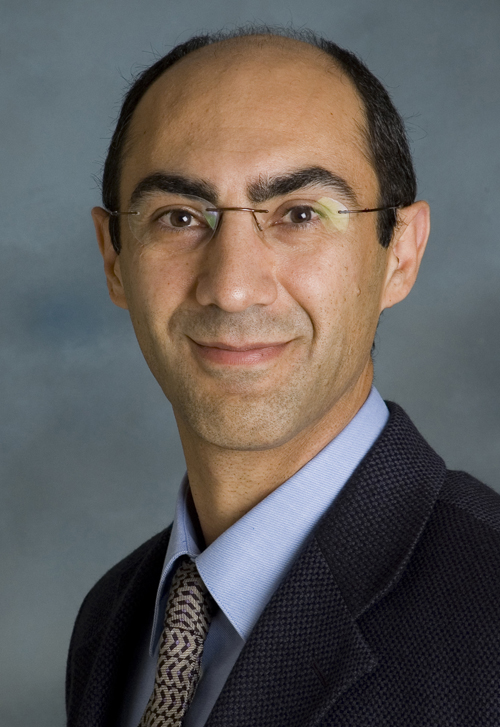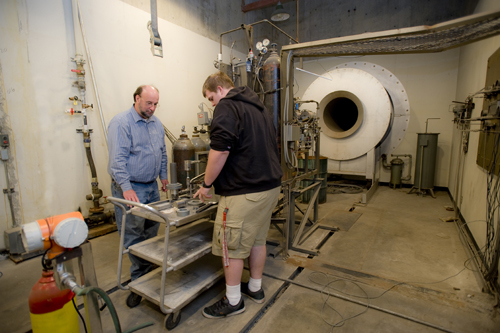 When you’re driving a car and need to correct your course, the solution is simple: just turn the steering wheel and hit the gas pedal. When the vehicle is a satellite in orbit, however, the logistics become considerably more complex. That was the impetus behind a design clinic project for Rocketdyne, which approached the college last spring to help investigate options for a new propellant feed system.
When you’re driving a car and need to correct your course, the solution is simple: just turn the steering wheel and hit the gas pedal. When the vehicle is a satellite in orbit, however, the logistics become considerably more complex. That was the impetus behind a design clinic project for Rocketdyne, which approached the college last spring to help investigate options for a new propellant feed system.
Ordinarily, when a satellite needs propulsion for realignment or reorientation, a high-pressure helium-based system swings into action, forcing the propellant out of the tank to nudge the satellite in the right direction. The helium tank is typically heavy, with thick walls, and is equipped with a pressure regulator to handle a wide pressure difference. “You let the gas blow out, so the pressure in the helium tank goes from high levels and drops to low levels when the process is over,” explains Bob Ryan, an associate professor of mechanical engineering, and coprincipal investigator on the project.
“Pressurized helium tanks are generally at a very high pressure,” adds co-PI Hamid Johari, professor and chair of the Department of Mechanical Engineering, “but the system only needs a small fraction of the pressurized helium—maybe five to ten percent of it. It’s like keeping a gas tank full when you’re just going to the market. You don’t need all that weight.”
 For the Rocketdyne project, Johari and Ryan have been working with a couple of students to explore the feasibility of developing a system that relies on evaporation of liquid to generate the gas that pushes the propellant from the tank. Such a system would make it possible to use a lighter, thinner tank because the pressure could be maintained at much lower values. It would also be easier to control more accurately. The first phase of the project was a paper study to investigate the available chemicals and determine what can be used within given constraints. The CSUN team is now designing an experiment to test the viability of the model.
For the Rocketdyne project, Johari and Ryan have been working with a couple of students to explore the feasibility of developing a system that relies on evaporation of liquid to generate the gas that pushes the propellant from the tank. Such a system would make it possible to use a lighter, thinner tank because the pressure could be maintained at much lower values. It would also be easier to control more accurately. The first phase of the project was a paper study to investigate the available chemicals and determine what can be used within given constraints. The CSUN team is now designing an experiment to test the viability of the model.
“It’s very important for the department to get involved with local companies,” says Johari, “and their sponsorship is really important for us to be able to work collaboratively on technical issues. Because these students gain experience, they may have a leg up when positions open up at local companies. The companies see the students and the level of their work, and if they decide to hire them, they really know what they are getting.”

Subscribe to this post's comments feed